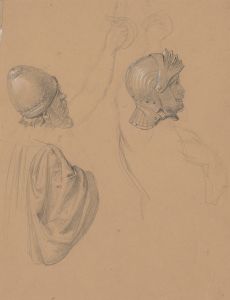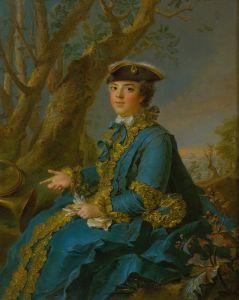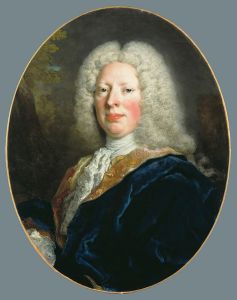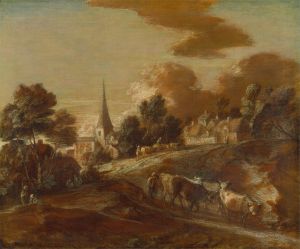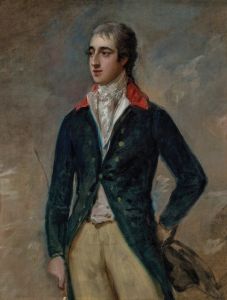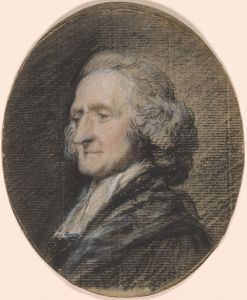
Elizabeth Wrottesley, later Duchess of Grafton
A hand-painted replica of Thomas Gainsborough’s masterpiece Elizabeth Wrottesley, later Duchess of Grafton, meticulously crafted by professional artists to capture the true essence of the original. Each piece is created with museum-quality canvas and rare mineral pigments, carefully painted by experienced artists with delicate brushstrokes and rich, layered colors to perfectly recreate the texture of the original artwork. Unlike machine-printed reproductions, this hand-painted version brings the painting to life, infused with the artist’s emotions and skill in every stroke. Whether for personal collection or home decoration, it instantly elevates the artistic atmosphere of any space.
Thomas Gainsborough's portrait of Elizabeth Wrottesley, later Duchess of Grafton, is a notable example of 18th-century British portraiture. Gainsborough, one of the most prominent portrait and landscape painters of his time, was known for his ability to capture the elegance and personality of his sitters. This painting depicts Elizabeth Wrottesley, who later became the Duchess of Grafton through her marriage to Augustus FitzRoy, 3rd Duke of Grafton.
Elizabeth Wrottesley was the daughter of Sir Richard Wrottesley, 7th Baronet, and Mary Leveson-Gower. She married Augustus FitzRoy in 1756, and through this union, she became the Duchess of Grafton. Augustus FitzRoy was a prominent political figure, serving as Prime Minister of Great Britain from 1768 to 1770. Elizabeth's marriage placed her in a significant social and political position within 18th-century British aristocracy.
The portrait, like many of Gainsborough's works, reflects his mastery of texture, color, and composition. Gainsborough often painted his subjects in naturalistic settings, and his works are characterized by their soft, flowing brushwork and attention to detail. While specific details about the commission or the exact date of this painting are not widely documented, it is consistent with Gainsborough's style during the mid to late 18th century.
Elizabeth is portrayed with grace and refinement, qualities that were highly valued in aristocratic portraiture of the time. Gainsborough's ability to convey the sitter's social status and character through subtle details in posture, expression, and attire is evident in this work. The painting likely served as a representation of Elizabeth's elevated status and her role within the aristocracy.
The portrait is an example of Gainsborough's contribution to the development of British portraiture, blending elements of Rococo elegance with a more naturalistic approach. His works were highly sought after by the British elite, and he remains one of the most celebrated artists of his era.
Further details about the current location or provenance of this specific painting are not readily available. Gainsborough's works are held in major collections around the world, including the National Gallery in London and the Huntington Library in California, but the exact whereabouts of this portrait would require additional research.






